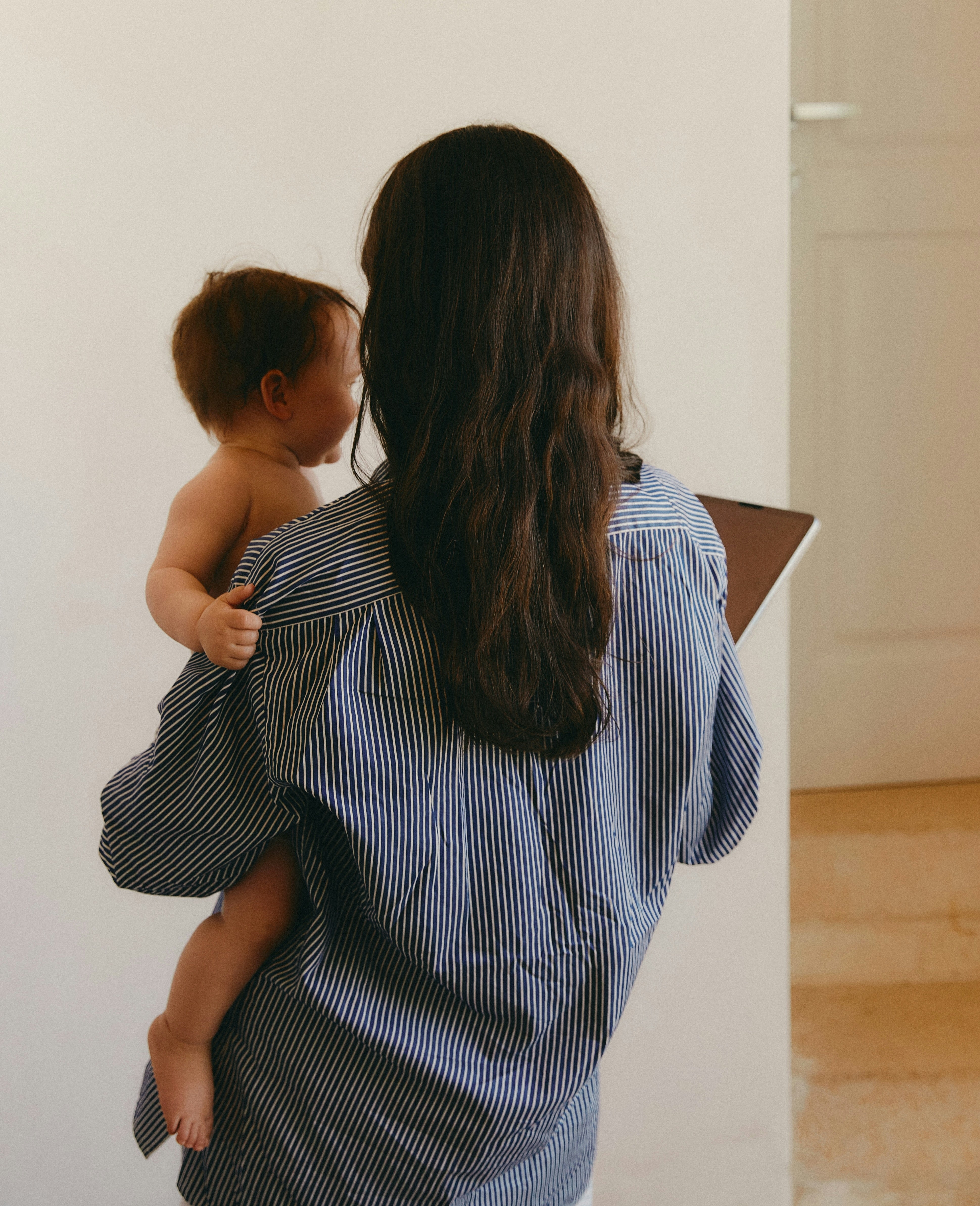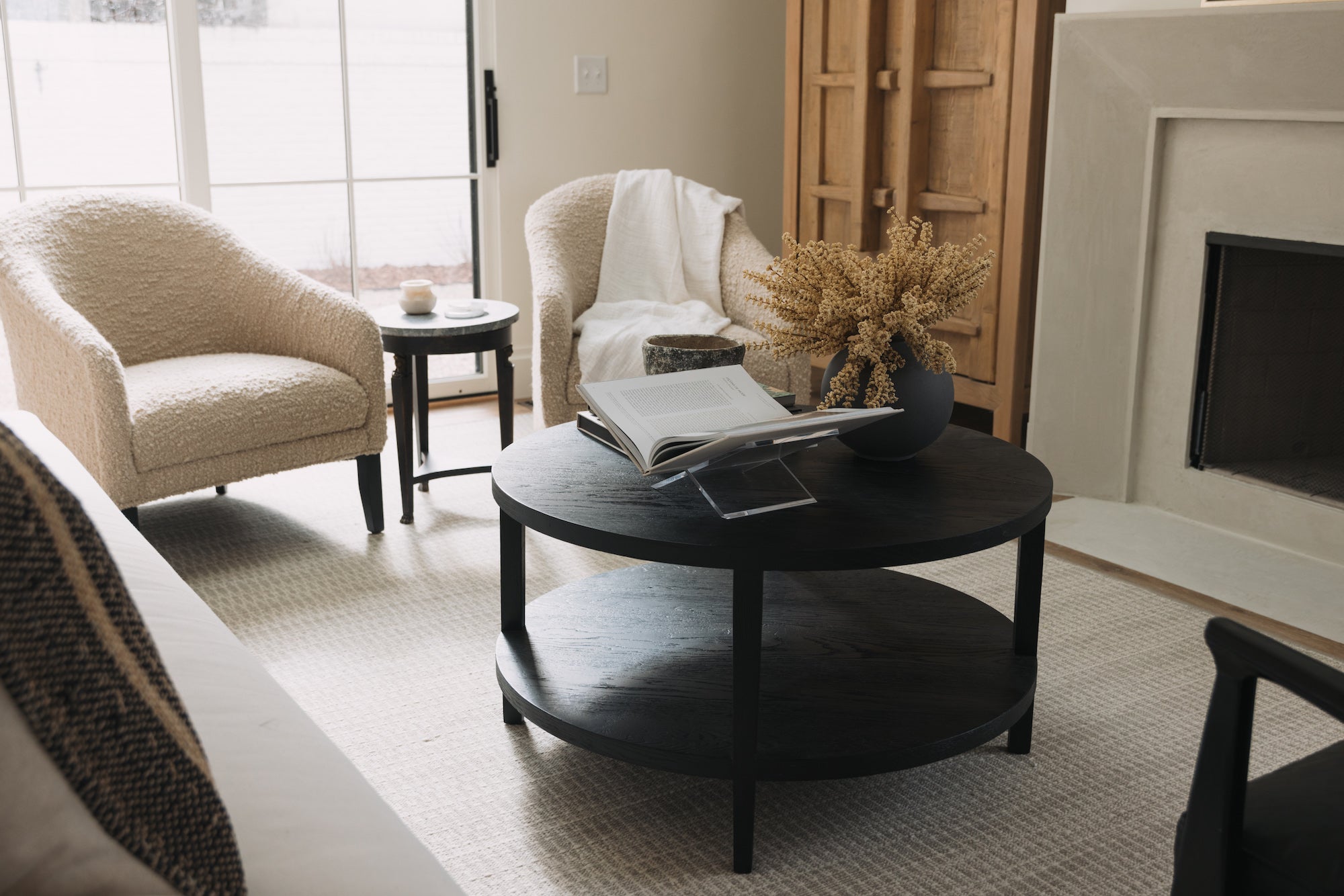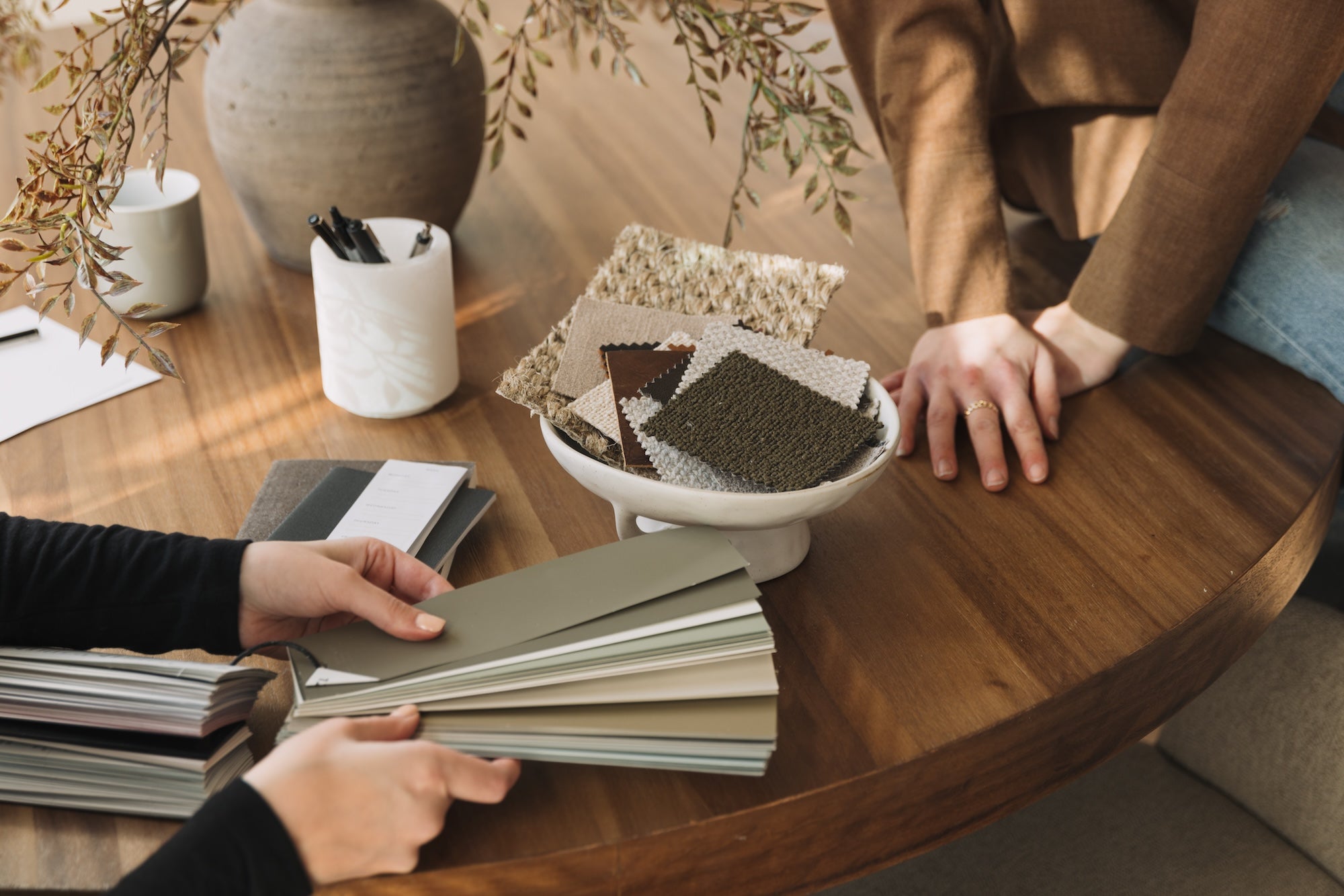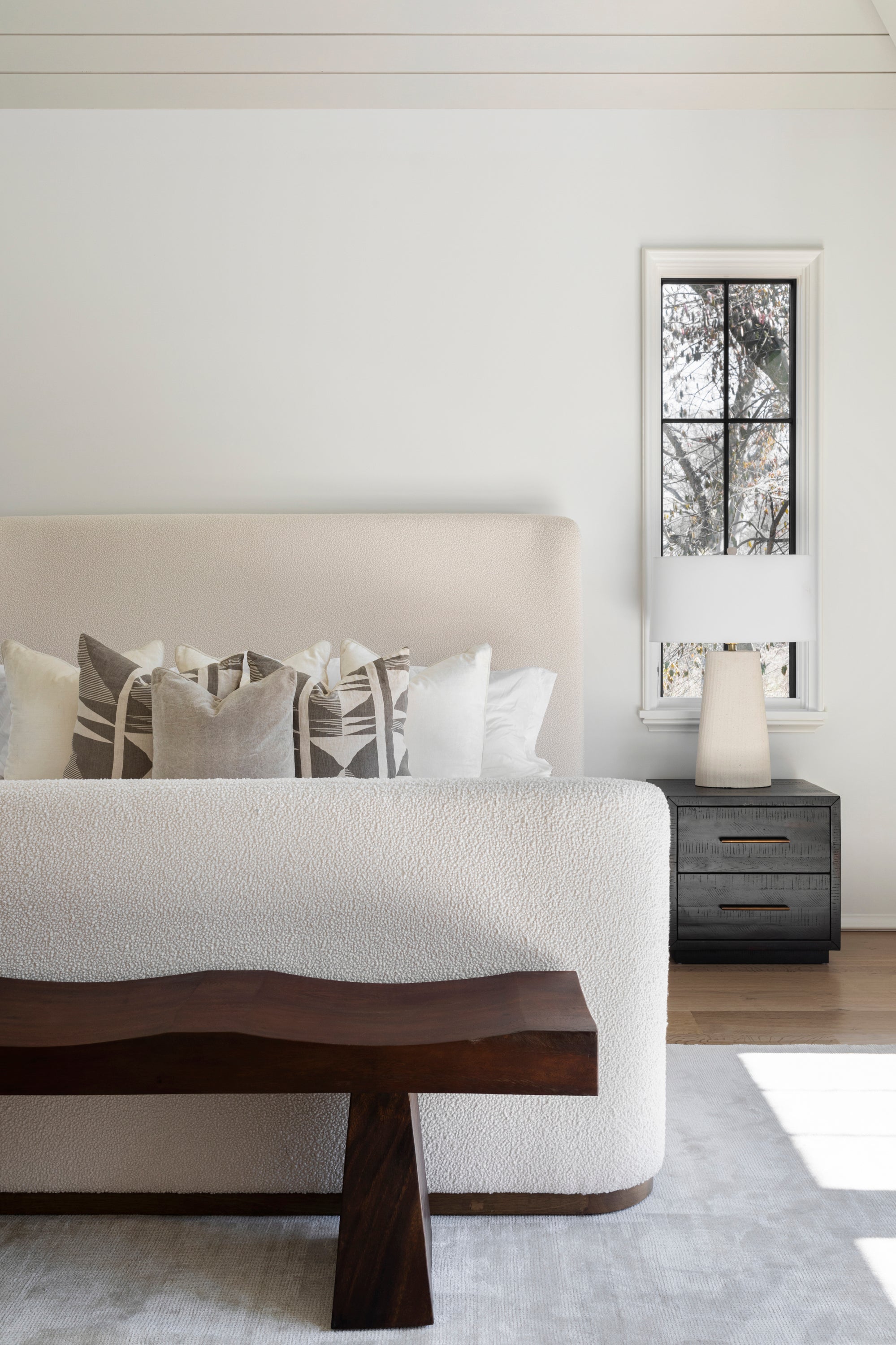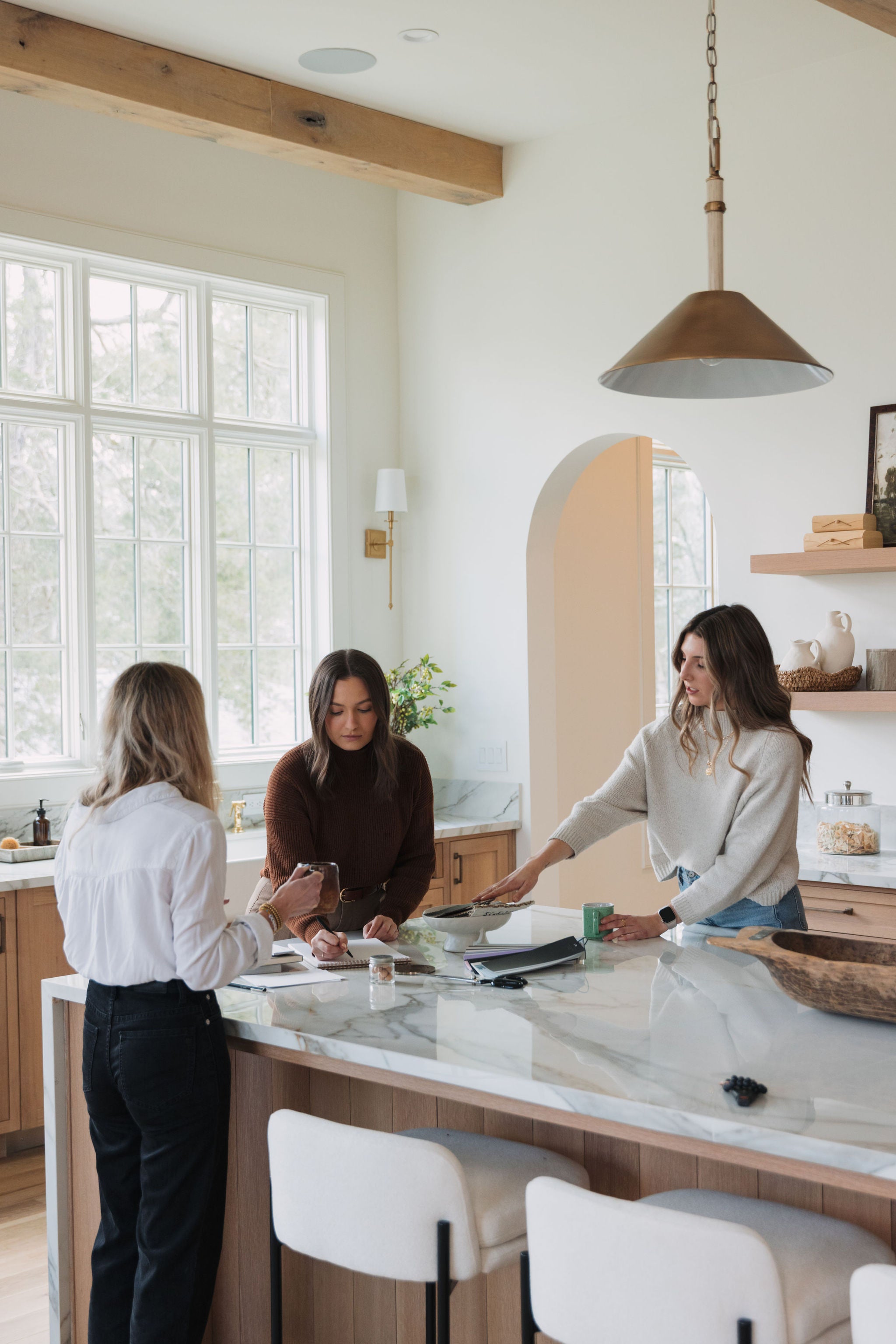design advice
The Beauty of Slow Design: 4 Steps to Thoughtfully Designing Your Dream Home
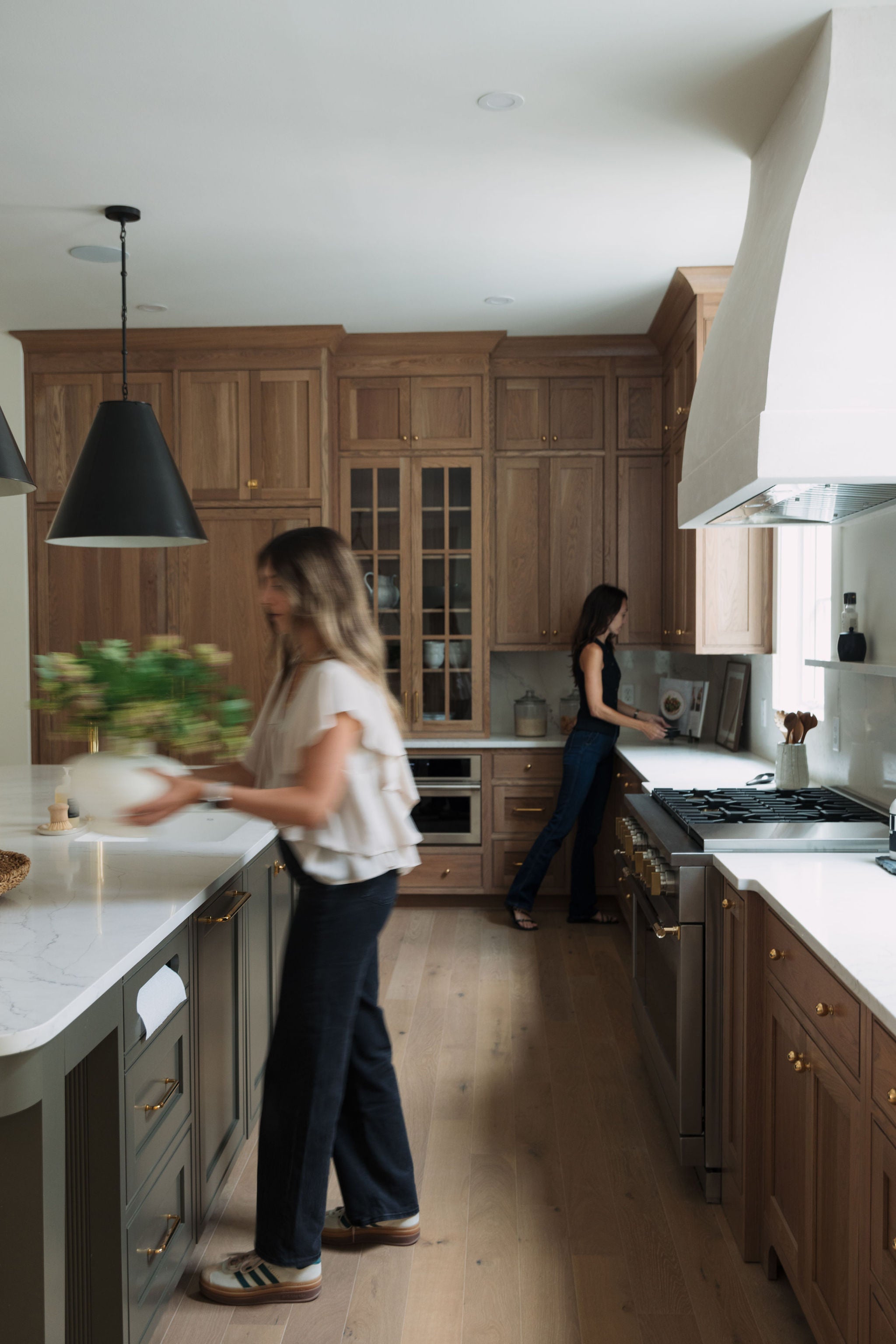
I am guilty of it, too.
Roaming about online for home inspiration and soaking in sweeping renovations and custom new builds. Kitchens where cream zellige tile is stacked on the backsplash, brass Waterworks fixtures blooming from a farmhouse sink. Living rooms outfitted with new, custom upholstery. Oversized canvases from a local artist and designer lighting sourced from the Netherlands. Every inch is so calculated, every nuance so thoughtful, that the room becomes a symphony—delighting with every direction you turn and every textile you touch.
And it is all done at once. Magically. The vision is delivered complete.
This, you think, is what I want.
And well, true. I do, too. But here is the secret they don’t tell you. The truth behind the hand-painted wallpaper and wide plank oak flooring: big design is a big rarity.
Most people can’t enjoy the experience of immediacy. The magic of all at once. Building and filling a home — especially with any degree of thoughtfulness — is, to put it kindly, a sizable investment. What some people spend on a sofa, some people don’t make in a year.
So for the rest of us, the majority of us, we must delight in being slow designers. We must make gradual progress. A tile here, a fixture there, a sofa somewhere in the land of tomorrow. We must not get sidetracked or disheartened when our oversized lumbar pillow doesn’t immediately transform the guest room into an Amber Interiors retreat in Monterey Bay. We are here for the long game. We understand it takes time and a collection of pieces to make everything settle in just right.
I know this may not be the popular approach: patience. Some people want it all now. In the Amazon age, it’s no surprise people rush to online marketplaces to get a haul of cheap look-a-likes that will “do the trick.”
And while that is an answer, it’s not, in my humble opinion, the answer.
Quick design is cheap design. And cheap design isn’t lasting.
What’s so nourishing about spaces that inspire us is that they meet tactile expectations. The quality of the material and the sincerity of the craftsmanship equal the beauty of the composition. A handsome sofa silhouette is one thing. But finding a beautiful one you truly want to sink into for a long weekend is quite another.
Remember: You don’t just have to look at these pieces. You have to live with them. And in an ideal world, you want them to age with you—gracefully adding character, not quickly pilling apart.
Author Robert Poynton says, “Don’t let the ambition to do something big stop you from doing something small.” And while he wasn’t referring to design when he wrote this, I remind myself of this phrase when I feel an urgency to cut corners and do all or nothing. Progress is progress. It’s one tile in front of the other.
If you are stuck in the land of unrealistic Pinterest woes, I encourage you to take these few steps for thoughtfully designing your “dream” home:
- Cast your vision. Knowing what you truly want is half the battle. Too many people purchase on a whim. A flash sale and they’re off to races buying an armchair that’s the right size, but not quite the right finish. Understanding your end goal and using that as a guidepost will ensure you don’t end up designing a room that’s close-but-not-quite.
- Prioritize the impact. If you are unsure where to invest first, look at your sourcing list and sort by impact. Which pieces will make the largest impression — both to the aesthetic and daily living? Understanding what has the biggest potential to transform your space will help you invest first in pieces that provide more immediate value.
- Invest as you are able. Know your budget seasons. Pace yourself. Delight that the time will allow you to discover new sources and refine your taste. You’ll delve more into what is true to you and less into what’s on trend. Time, in this way, is a gift.
- Enjoy. Each piece, each moment. The journey of watching it come together. Document as you go along. Incremental changes can be harder to sense, and it will be amazing to flip back to your “befores” and see how you’ve transformed your space. Slow design brings big change.
If you are in the midst of your home design and resonate with any of the above, I encourage you to explore our design services. It's complimentary—to allow you the benefit of investing in core products over process—and tailored to your budget, timeline, and lifestyle. Whether you're starting small with a sofa here and a rug there or a full-scale furnishing project, we're here for the long haul—to help you find the beauty of slow design.
